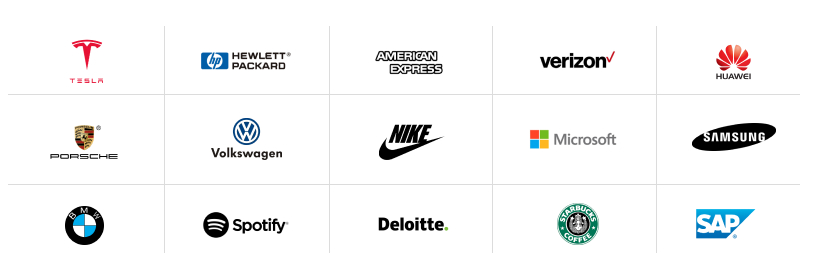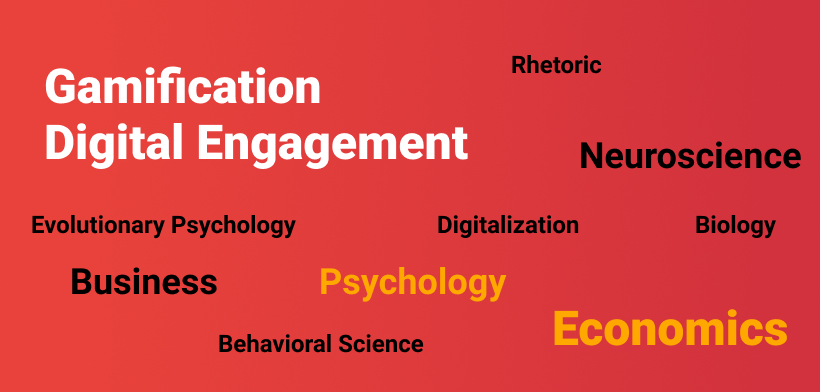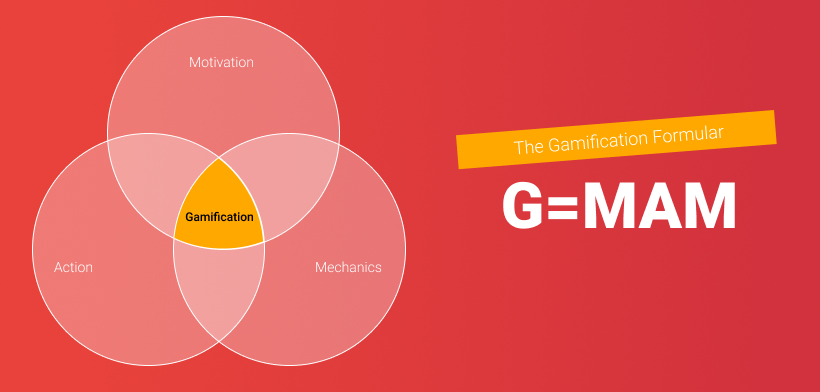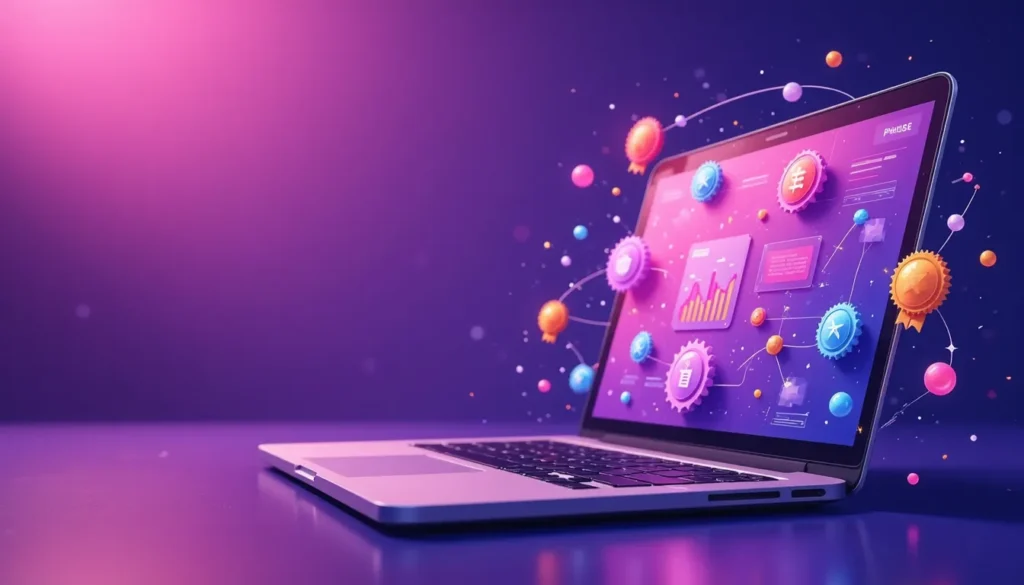Gamification is a megatrend of digitization. If used correctly, one can achieve dramatic increases in sales, win tons of new customers and even improve the motivation of ones employees – to name just a few examples.
Large companies are increasingly taking advantage of gamification. The youngest representatives include car brands such as Volkswagen, BMW, Porsche and Tesla, but Microsoft, Huawei and SAP also use it.

Nevertheless, many managers, companies and decision-makers do not know how to use gamification profitably and thus give away enormous potential.
Whether you are one of the people mentioned above, or just curious what gamification means – this article is for you. I will explain the mega trend Gamification in an understandable way, underpin it with examples and give some tips how you can profit from it immediately.
Let’s go, let’s go! Here’s what I’ll cover in this article.
[powerkit_toc title=“Table of Contents“ depth=“2″ min_count=“2″ min_characters=“1000″]Gamification – a mega trend for sales growth
Gamification is quite a young phenomenon. A glance at Google’s trend analysis reveals that it was not until the end of 2010 that interest in gamification really took off and has been consistently high for several years.
Here are some interesting key data:
- The global market for gamification is expected to grow by at least double by 2021 to approximately 12 billion US dollars.
- With Gamification, business KPIs can be increased by several hundred percent, as examples from SAP, Google and Microsoft show.
- Gamification is an economic as well as a scientific discipline and a combination of psychology, neuroscience and often business studies / economics.
- Gamification is a totally misleading term, which has actually only little to do with „games“. Who would have thought?
Gamification is currently on everyone’s lips. And rightfully so: the advantages of using it correctly are so great that everyone wants a piece of the cake. But what exactly is gamification?
What Gamification Is

The answer to that question is not as easy as you might have thought. There is no ‚official definition‘ of gamification. Many scientific disciplines play a role. Generally speaking, however, it can be said:
Gamification is a link between economics and psychology and increases the motivation of people to interact with products and processes.
This is the short version. Gamification is about specifically addressing the motivation of users, customers or employees – people – in order to motivate them to behave in a certain way.
Aha. But why is it called Gamification?
Because ‚games‘ are particularly good at motivating people to interact. Most people play voluntarily, no one forces them to. Seek and hide as a child. Chess as an adult. And today digital games also.
Games are products and processes based on motivations, in pure form. It’s good to learn from them and how they achieve trigger our motivations and desires so well. That’s why we call the movement Gamification, although of course it doesn’t mean turning every product into a ‚game‘.
Rather, the central question is which strategies can involve, motivate, activate and address people so much that they
- buy a product
- interact more frequently with a product
- work faster or better
- go to the polls
- throw away less plastic
- … or more loyal customers are
This list could be continued almost arbitrarily.
Through gamification or digital engagement, people can be motivated to do certain things – what those things are always depends on the objective.
For example, a company could focus on customers paying higher prices for a product, or buying the same product more often, or talking about the product more often. There are literally no limits.
Gamification is by no means limited to business processes – it can also be used in the area of eLearning or lifestyle. Ultimately, it is about human motivations, which are context-independent. In this article, however, I will focus on the business aspects.
Why is Gamification currently so up to date?
Motivations are an old hat! one might think at this point.
Why is gamification and engagement so successful right now?
The answer is simple: never before have there been so many data sources (in other words: digital games) to explore and optimize the mechanisms by which human motivations can be actively triggered. In recent years and decades, digital games have provided many new insights into how people tick. The more digital games there are, the more data can be generated on the basis of which the mechanisms can be further refined.
Digitization provides Gamification with new possibilities. In recent years it has become clear how powerful the combination of motivation and game mechanics is.
Sometimes gamification is also used unconsciously.
Let’s have a look at some numbers. One can assert a lot, but the successes of the gamification can be easily proven. This is also the reason why it is growing up to such a mega trend.
- Wikipedia: Every day, several thousand users take care of error-free articles of the largest digital encyclopedia of the world – completely free of charge and of their own free will thanks to Gamification.
- WAZE-App: Users of the navigation app WAZE, which was bought by Google in 2013 for 966 million dollars, feed the database completely free of charge with current traffic reports, speed cameras, road closures, etc. thanks to an avatar system.
- Dominos Pizza: 30% more revenue from a pizza app based on explicit gamification. Usually one is already happy with 2-3% more revenue through normal marketing measures…
The interesting thing is: With some products, such as Wikipedia, nobody would really think of the term ‚gamification‘. The term implies that gamification is something ‚playful‘, although this is not true at all.
Actually, the term is insanely misleading. A much better word is digital engagement.
Same, but different: Digital Engagement
It’s basically the same, but it sounds better. That’s not unimportant. Those who want to convince their boss or colleagues to finally build good digital products will find it much easier to say ‚Digital Engagement‘.
People who talk about gamification often get feedback from people who don’t know what it is: Games? Nah, we don’t need that.
On the other hand, anyone who says: ‚To increase sales, we need digital engagement‘ gets the answer: Yes, that’s exactly what we need!
In companies this is a common problem of understanding, which is why I explicitly point this out.
Digital engagement refers to the consistent focus on people’s motivation.
Many products and processes are digital, but not engaging. In other words, they’re boring. Gamification and Digital Engagement have the same goal, namely to increase the motivation for interaction.
The term ‚digital engagement‘ raises the discourse to a more objective level. But the name is not so important. Much more important is: How exactly does the whole thing work? And how can you and your company benefit from it?
How Gamification Works

The core of gamification can be broken down into three central concepts. By the way, the theoretical background of this is very well researched, especially in recent years psychology and neuroscience have made great progress. More about this in another article.
The three core concepts of gamification and digital engagement are as follows
- Motivation
- Actions or business goals
- Mechanics
I therefore like to call the triad the G=MAM formula. That’s easy to remember.
The right combination of these three concepts can motivate employees, increase sales or build loyal customers. Isn’t that awesome!
Motivations
First: Every human being has motivations that can be triggered. You may read this article because you are curious. Or because you want to increase the revenue of your company. Or because you want to understand the gamification others use on you. All these are motivations.
If you know how motivation works, you can control it. All humans have the same basic motivations, but they are not equally prominent in every person.
There are various theoretical models out there which focus on people’s motivations. The most comprehensive model so far, which has often been confirmed by science, was developed by my colleague Yu-kai Chou and is called Octalysis. It presents 8 central motivations of the human being. For this article it is sufficient to realize that these 8 motivators are the same for all people everywhere in the world.
If none of these motivators are present, no action happens. In order to optimize a product, either more motivations have to be addressed or the existing ones have to be implemented even more strongly.
In general, one can distinguish between extrinsic and intrinsic motivations.
Examples of extrinsic motivations are
- Financial incentives, such as money
- Status and titles, such as Manager, Director, Head of X, etc.
- Material goods, such as cars, clothing, watches, technology, etc.
- Virtual goods, such as awards and points
- etc.
Examples of intrinsic motivations are
- Creative work, such as drawing or inventing things
- Strategic freedom, for example, by leading several paths to the goal
- Social interactions, such as praise or participation
- etc.
If you want to know more, take a look at the Octalysis framework by Yu-kai Chou.
Actions & Business KPIs
Second: Every product and every process has a business goal – on the basis of this goal the right Gamification or Digital Engagement Design can be worked out.
For example: Do you want to increase the amount of users for your App or do you want to create more revenue per user? Which motivations specifically and which mechanics to use heavily depends on your business goal.
A good gamification or digital engagement strategy is therefore always focused on very specific KPIs. There are many motivations that can be incorporated – but only if you know exactly what the purpose is, you will be able to improve products and processes in an effective way.
Often it is easier to limit yourself to a few goals, but then to pursue them to the optimum. Once the motivations you focused on are implemented perfectly, you can look to implement additional ones.
Goals always result in very specific actions that users, customers or employees should perform. Such goals can be
- Users should open an app at least 5 times per week.
- Users should recommend an app to their friends
- A product should achieve 20% more revenue
- Employees should be 75% more satisfied
- 200% more new customers to be acquired per week
- etc.
The possibilities are infinite. It is important to set concrete goals, so that the Desired Actions can be derived from these, to which the Gamification is aligned.
Mechanics
Third: Mechanics – sometimes also called gamification mechanics. Mechanics are nothing more than vehicles with which the right motivations are addressed in such a way that people carry out the Desired Actions.
Gamification mechanics are like tools that have proven to be particularly effective at generating motivation. There are many mechanics, and not all address the same motivations. Therefore not all mechanics are suitable for all applications.
The whole thing can be demonstrated using the example of the hammer. A hammer is a great tool as long as you want to put a nail in the wall. But to cut a piece of wood, you need another tool, and the hammer doesn’t do much.
It is very similar with gamification mechanics. A leaderboard, for example, is beneficial for some situations, but can have the opposite effect in other situations and even reduce general motivation.
There are basically an infinite number of mechanics. Anyone can come up with a new one.
Here are some well-known gamification mechanics for a better understanding.
Extrinsic Gamification Mechanics
[powerkit_collapsible title=“Points“] Points are a very popular and an easy way to motivate people to interact, but points are not very sustainable, either.Most loyalty programs use the points principle: You earn points for every and each Desired Action (e.g. the purchase of a train ticket). Then, you can redeem your points against rewards (e.g. a coffee voucher). Yeah, it works. For some time. Then it gets boring if not supplemented by additional mechanics.[/powerkit_collapsible] [powerkit_collapsible title=“badges“] Badges are, for example, certificates, brands or virtual states. People strive for these extrinsic rewards. Badges can be collected in many games, programs, apps and forums. They are easy to implement and increase the motivation for interaction.
Badges, however, are not very sustainable. Once all badges have been achieved, the motivation fades away if not supplemented by additional mechanics.
[/powerkit_collapsible]
[powerkit_collapsible title=“Leaderboards“]
Leaderboards offer comparison possibilities and create a competitive atmosphere. They are suitable for short motivation boosts, but can be dangerous. Not every person likes competition. Leaderboards are very well suited for the competitive type, but often, they are implemented regardless of the target group.
[/powerkit_collapsible]
These three mechanics are also known as the Points Badges Leaderboards Triangle, because many ‚gamification experts‘ with only a basic understanding focus on these three. They are easy to implement and very popular, but – misused – can also have the opposite effect or remain irrelevant.
Just as important are therefore intrinsically acting mechanics.
Intrinsic Gamification Mechanics
[powerkit_collapsible title=“Exploration“] People like to discover and explore new things. In the end, they read books and watch movies for this reason: They want to know how the story goes on.[/powerkit_collapsible] [powerkit_collapsible title=“Strategy“]At best, there are several ways to get to a goal. People like to try out and optimize different strategies.[/powerkit_collapsible] [powerkit_collapsible title=“Social Gifting“] People like to do favors – giving is often even more fulfilling than receiving something as a gift. Companies make a lot of money by enabling their customers to give gifts to other customers. Gift vouchers or „Buy-for-a-Friend“ functions fall into this category.
[/powerkit_collapsible]
Gamification mechanics can be found almost everywhere where products and processes are motivating. The progress bar at LinkedIn (Ohh, I’m almost at 100%!), the „Update“ button of the web browser (Hey, I wanna see whats new!) or the salary levels (I am at level 21, hah! You’re only 19!) at companies – all these are gamification mechanics.
Or in other words: those are vehicles to generate motivation.
Establish the Engagement Strategy
This knowledge enables you to craft your own engagement strategy. For this to work, you need constant fine-tuning or a lot of experience.
Here are the basic steps so you can get started right away
- Define you business KPIs
Think about the overall goal of the product or process you want to optimize. Let’s say you work for a major car manufacturer and want to improve the online configurator for new cars. One goal could be: 20% more configurations per week!
- Define the Desired Actions
The Desired Actions result from the KPIs. The basic question is: What exactly does the user have to do for me to reach my KPIs? Examples of new car configurations could include clicking on the configurator itself, completing the configuration (so users don’t leave the configurator in the middle and give up annoyed), viewing popular configurations, sharing or saving a new configuration, and so on.
- Determine the motivation profile of the target group
What is your target group? And more importantly, how is it motivated? It is fundamentally important to answer these questions. Most people don’t do this and create engagement designs that don’t work.
An example: If I need quick, short-term success, extrinsic motivations are better suited. If I need long-term success, intrinsic motivators should be taken into account.
- Implement gamification mechanics
Last but not least: You have to modify your product in such a way that users feel a stronger motivation to interact with it – linked to your business KPIs.
Most people skip the first 3 steps and jump directly to the mechanics. This usually leads to bad results. For example, if Wikipedia were to motivate its members with monetary, extrinsic rewards to correct contributions and check for mistakes, this would not be very sustainable. Wikipedia would have to pay a lot of money. Instead, Wikipedia motivates intrinsically, and people have become long-term and free supporters.
Now it also becomes clear why the gamification mechanics only make up the last point of the engagement strategy (and thus quasi only the outer layer): they are the tip of the iceberg. To use them correctly, you first need the targets (KPIs), the Desired Actions and a target group definition. Only then can you select the right mechanics.
This strategy can bring about enormous improvements. There are no limits to the possibilities. More customers? More revenue per customer? Produce less plastic waste? With the right engagement strategy this is possible.
